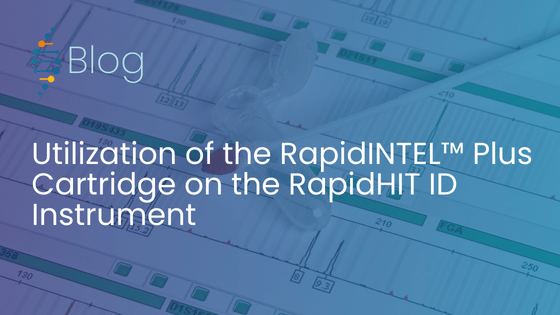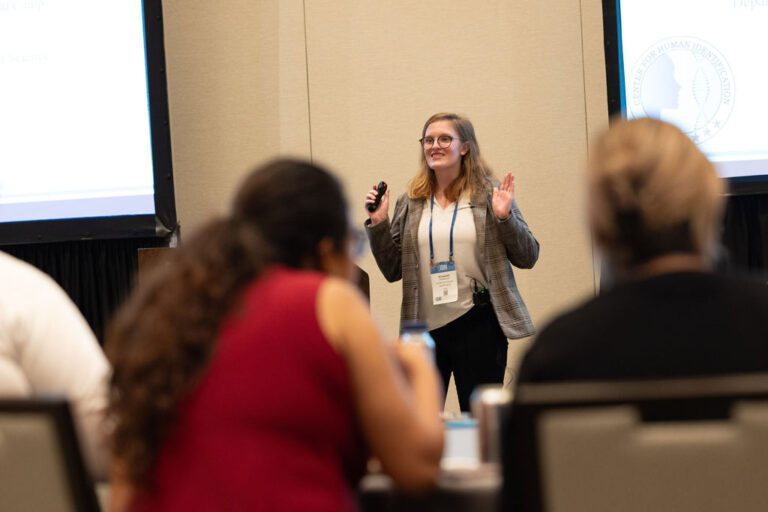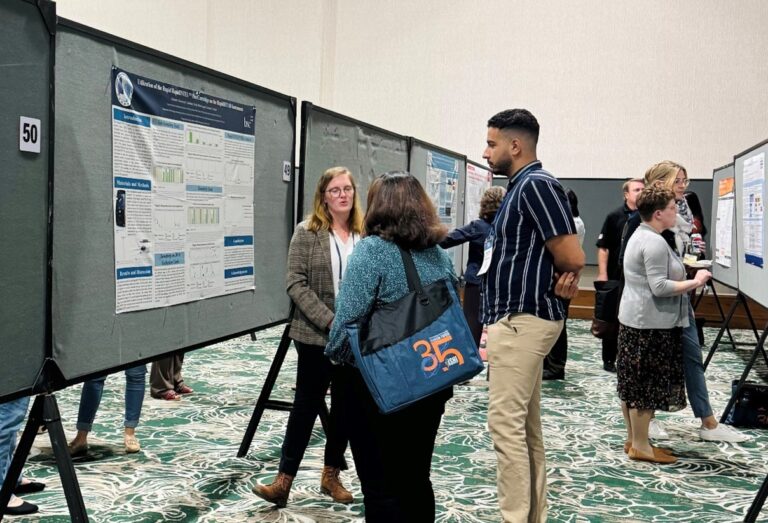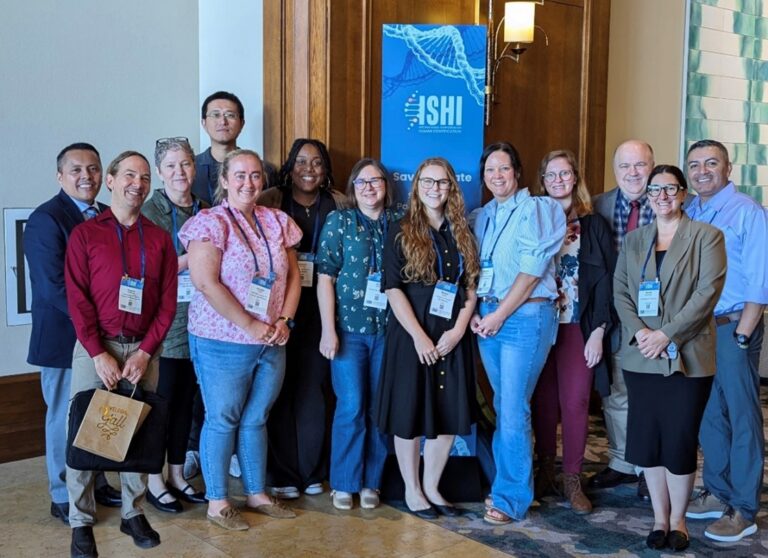This article was written by Elizabeth Kowalczyk, Biomedical PhD Student at The University of North Texas Health Science Center at Fort Worth.
I have explored various aspects of forensic science, starting my research journey in high school through internships at the Hudson Alpha Institute for Biotechnology and Huntsville Hospital. During my undergraduate studies, I majored in Forensic Science, gaining hands-on laboratory experience working with Herpes Simplex Virus and Ginsenosides. This led to a published paper on the topic (DOI: 10.13140/RG.2.2.16138.27846). I also presented research on Cryptococcus neoformans infections and its relation to alternative splicing (DOI: 10.13140/RG.2.2.16138.27846).
Beyond the lab, I was part of the Forensic Anthropology Search and Recovery team, assisting law enforcement in the recovery of human remains. Additionally, I interned with the Department of Forensic Science (DFS) Crime Scene Unit in Washington, D.C., where I worked on cases ranging from robbery to homicide. One of my projects focused on discrepancies between lay individuals and their testimonies (DOI: 10.13140/RG.2.2.25303.07844).
My research journey extended internationally when I conducted studies on dwarf mangroves and stream gauging in Laguna Bacalar, Mexico (DOI: 10.13140/RG.2.2.10685.68327).

From Forensic Science to Biomedical Research
After completing my undergraduate degree, I sought opportunities in both research and graduate programs. I was accepted as a researcher at the Center for Human Identification (CHI) at HSC at Fort Worth before transitioning into my current role as a full time PhD student in the College of Biomedical and Translational Sciences.
At CHI, I have had the privilege of collaborating with Dr. Jennifer Cihlar and Jonathan King (CHI) and Robert Lagace (Thermo Fisher Scientific). Together, we worked on the “Utilization of the RapidINTEL™ Plus Cartridge on the RapidHIT ID Instrument”, a study funded, in part, by Thermo Fisher Scientific (Sponsored Research Agreement RP0223).
Engagement in the Scientific Community
As an early-career scientist, I understand the importance of publishing, sharing research, and networking within the scientific community. Attending the International Symposium on Human Identification (ISHI) was a pivotal moment. I had the opportunity to present alongside Dr. Cihlar at both the poster session and the Young Scientist Showcase—an incredible chance to meet peers at similar stages of their careers.

Research Focus: Utilization of the RapidINTEL™ Plus Cartridge on the RapidHIT ID Instrument
My current research (and the topic of my poster presentation at this year’s ISHI) centers on the practical application and workflow optimization with the RapidINTEL™ Plus Cartridge on the RapidHIT ID instrument, a system designed to generate CODIS-level short tandem repeat (STR) profiles in under 90 minutes. Originally developed for non-traditional forensic settings like police booking stations, recent advancements in Rapid DNA technology have extended its application to a wider variety of sample types, including low-quantity, aged, and degraded biological materials.
This evolving technology presents new challenges and questions for forensic DNA analysis, particularly with the introduction of the RapidINTEL™ Plus Cartridge, which is tailored to crime scene samples and integrates internal quality controls for DNA quantity, inhibition, and degradation. The RapidINTEL™ Plus cartridge offers several new features that enhance its utility, including two protocols: General, designed for moderate DNA quantities, and Specialized, tailored for low DNA quantities or challenging samples.
My work investigates various key considerations:
- When should specific cartridges (ACE vs. INTELPlus) be used?
- How do swab type and protocol choice (Specialized vs. General) impact results?
- How does the volume of lysis buffer affect swab selection and DNA recovery?
- Are DNA collection cards a viable option?
- Can sub-sampling be conducted without compromising the original swab?
- What are the best practices for achieving complete DNA profiles from various sample types and DNA input volumes?

Our study evaluated the RapidINTEL™ Plus Sample Cartridge across a wide range of forensic scenarios to address these questions and offer insights into its strengths and limitations.
We focused on three core research areas:
- Sub-sampling: Analyzing 100 blood swabs with inputs ranging from 0.25 µL to 5 µL.
- Sensitivity on swabs: Examining 105 blood samples with volumes from 0.125 µL to 10 µL.
- Sensitivity on DNA collection cards: Testing 29 saliva samples across different punch sizes.
Key Findings and Insights
New Features
- Stochastic (STO) Flags: The cartridge introduced the STO flag, which helps detect the likelihood of allelic drop-out or peak height imbalances greater than 40%. We found that all samples with dropout were flagged red, while green and yellow STO flags indicated no dropout issues.
- Quantification Markers: We also utilized the small and large quantification markers, which allowed us to predict DNA quantities used in the reaction. These predictions fell within expected ranges, calculated from published numbers of white blood cells/µl of blood, for most sample volumes.
Sensitivity on DNA Collection Cards
DNA collection cards can deliver full STR profiles from punches as small as 1.2 mm. Our tests on Bode and Nucleic cards illustrated first pass success rates, with:
- Bode 3 mm punches: 13 out of 14 runs passed.
- Nucleic 1.2 mm punches: 5 out of 6 runs passed.
- Nucleic 3 mm punches (general): 2 out of 3 runs passed.
Sensitivity on Swabs
We analyzed first pass success rates for cotton and micro swabs using both the INTEL Plus and ACE cartridges at various blood input volumes. Notable findings include:
- INTEL Plus specialized micro swabs: Achieved first pass successes (green checks) at blood input volumes as low as 0.75 µL.
- Cotton swabs (INTEL Plus, general protocol): Achieved first pass successes (green checks) at blood input volumes as low as 1 µL.
Sub-Sampling Study
Our sub-sampling study explored whether it’s possible to sub-sample swabs without compromising profile quality. We found that:
- Sub-sampled swabs achieved first pass successes with blood input volumes (on the initial swab) as low as 5 µL.
- In comparison, micro and cotton swabs with the blood applied directly (versus sub-swabbing), achieved first pass successes with blood input volumes as low as 0.25 µL and 2 µL, respectively.
Conclusion and Future Directions
With the addition of the INTEL Plus cartridge, users now have a broader range of options in terms of:
- Input volume
- Swab type
- Sample type
- Cartridge selection
- Protocol choice (general or specialized)
Our research provides a solid foundation for determining which combinations of these factors yield the most reliable outcomes. Future work will involve re-evaluating these parameters using modified Rapid DNA analysis to further refine our understanding and improve forensic applications.
Personal Insights
What sparked your interest in this work?
I’ve always had a passion for forensic science and genetics. This project allowed me to combine both, while applying research in practical forensic contexts.
Most rewarding aspect of the project?
The hands-on laboratory experience and the opportunity to contribute knowledge to the forensic community, especially in emerging DNA technologies.
Gratitude
I want to thank ISHI for the opportunity to present my research, Thermo Fisher Scientific for funding it, and Dr. Jennifer Cihlar for her mentorship, along with Dr. August Woerner and Jonathan King. Lastly, I’d like to thank the CHI R&D department at HSC at Fort Worth for its support.


